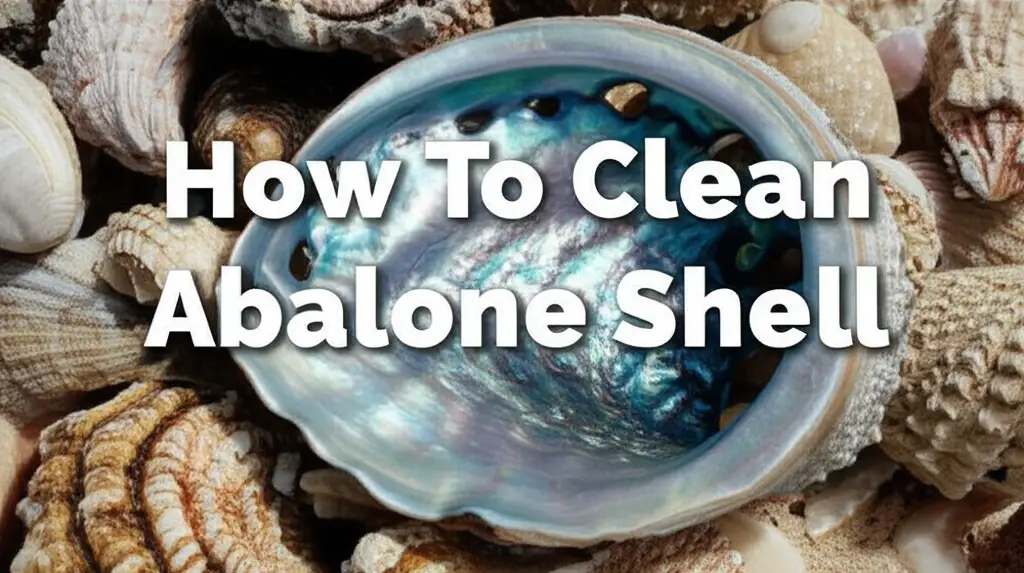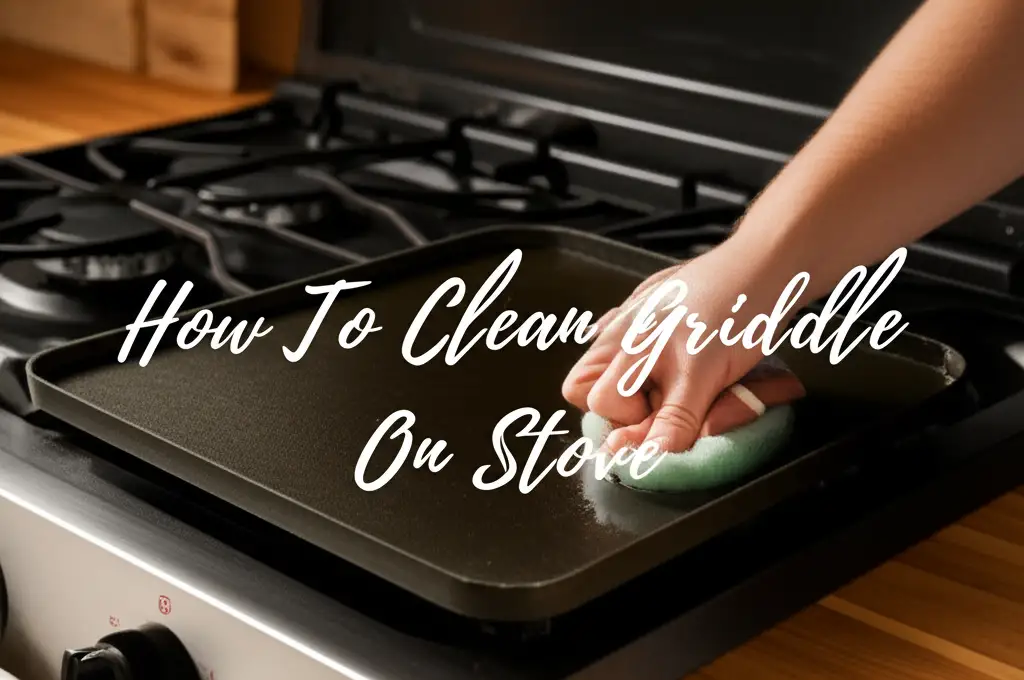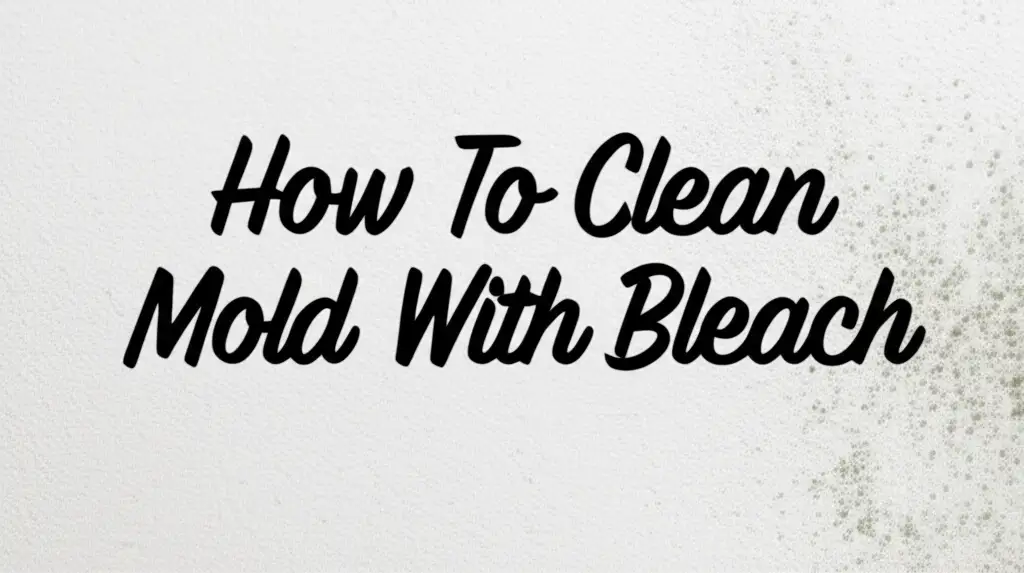· Home Cleaning · 11 min read
How To Clean Abalone Shell

Unlocking Brilliance: How to Clean Abalone Shell
Abalone shells are truly treasures from the sea. Their inner surface shows beautiful colors, changing with the light. People find these shells on beaches or buy them from shops. Over time, marine growth, dirt, and dullness can hide their natural shine. Knowing how to clean abalone shell properly is very important.
Cleaning your abalone shell brings out its hidden beauty. It makes the shell suitable for display or craft projects. This guide helps you understand the cleaning process. We cover tools, steps, and tips to restore your shell’s brilliance. Get ready to transform your shell from dull to dazzling.
Takeaway
To clean abalone shells effectively and reveal their natural beauty:
- Soak the shell to soften debris.
- Scrub away loose dirt and marine growth gently.
- Apply mild acid like vinegar for stubborn calcium deposits.
- Rinse thoroughly with clean water.
- Polish with mineral oil to enhance iridescence.
- Protect the shell for long-lasting appeal.
You can clean abalone shells by first soaking them in fresh water to loosen debris. Next, use a brush or scraper to gently remove marine growth and dirt. For tough calcium, apply a dilute acid like vinegar, then rinse well. Finally, polish the shell with mineral oil or a clear sealant to enhance its natural iridescence and protect its surface. This process restores the shell’s stunning beauty.
Understanding Your Abalone Shell: Why Cleaning Matters
Abalone shells come from large sea snails found in oceans around the world. The outer part of the shell often looks rough and dull. It has layers of marine growth, algae, and calcium deposits. This natural buildup hides the shell’s true beauty.
The inside of an abalone shell is special. It features a layer called nacre, also known as mother-of-pearl. This nacre creates the shell’s famous iridescent colors. Cleaning removes the outer grime. It lets the inner beauty shine through. Proper cleaning also helps preserve the shell’s structure. It prevents further deterioration from external elements.
Marine growth sticks firmly to the shell’s rough exterior. These can be barnacles, algae, or other ocean organisms. Calcium deposits also build up on the surface. These deposits are hard and dull the shell. Removing them takes careful effort.
Cleaning is more than just making the shell look good. It is about protecting a natural art piece. A well-cleaned shell lasts longer. It remains a beautiful decorative item. You can use it in your home or as part of a collection.
Gathering Your Tools and Supplies for Abalone Cleaning
Starting any cleaning project needs the right tools. Cleaning an abalone shell is no different. Having everything ready saves time and effort. It also ensures a safer and more effective cleaning process. I always prepare my workspace before I begin.
First, you need a strong brush. A stiff bristled brush works well for scrubbing away loose dirt. You might also want a wire brush for very stubborn areas. Safety gloves are important to protect your hands from rough shells and cleaning solutions. A large bucket or tub for soaking the shell is essential.
For cleaning agents, mild dish soap and fresh water are primary. White vinegar is excellent for dissolving calcium deposits. For more extreme cases, a very dilute acid solution might be needed, but use this with great caution. Remember, safety first. Have an old towel or soft cloth for drying and polishing.
Finally, consider a polishing agent. Mineral oil or baby oil works wonders to bring out the shell’s shine. Some people use clear sealants for longer protection. Make sure your workspace is well-ventilated, especially if using any stronger cleaners. Gathering these items sets you up for success.
Step-by-Step Guide: Initial Soaking and Scrubbing
The first step in cleaning an abalone shell is to soak it. This helps loosen all the dirt and marine growth. It makes later cleaning much easier. Think of it like pre-washing a very dirty dish.
Place your abalone shell in a sturdy bucket or tub. Fill the container with fresh water. Make sure the shell is fully covered. You can add a few drops of mild dish soap to the water. Let the shell soak for at least 24 hours. For very dirty shells, you might need to soak it for several days, changing the water daily.
After soaking, take the shell out. Use your stiff bristled brush to scrub the outer surface. Focus on areas with visible marine growth or dirt. Be firm but gentle. You do not want to damage the shell itself. This step removes most of the loose material.
For tougher spots, you can use a dull knife or a sturdy scraper. Carefully pry off barnacles or thick calcium layers. Always scrape away from yourself. Avoid scratching the shell’s delicate surface. Rinse the shell under running water to wash away loosened debris. This prepares the shell for deeper cleaning.
Tackling Tough Deposits: Acidic Solutions for Abalone Shells
Some abalone shells have very stubborn deposits. These hard, white or grey layers are usually calcium. Basic scrubbing will not remove them. For these, you need a mild acidic solution. I find that white vinegar is a safe and effective choice for most shells.
Vinegar works by dissolving the calcium deposits. You can mix equal parts white vinegar and water. Place the shell in this solution, ensuring the affected areas are covered. Let it soak for a few hours. Check the shell periodically. You might see bubbles forming; this is the acid reacting with the calcium. For more insights on using vinegar for cleaning, you can read our guide on how to clean shower with vinegar.
After soaking, use a brush or a non-abrasive scrubber. Gently scrub the areas where deposits remain. The vinegar should have softened them. This makes them easier to remove. Rinse the shell thoroughly with fresh water afterward. This stops the acid from working further.
If some deposits still remain, repeat the vinegar soak. Avoid leaving the shell in acid for too long. Too much acid can damage the nacre, the beautiful inner layer. Always dilute strong acids and use them with caution. For issues like stubborn green marine growth that might resemble mold, using vinegar can also be helpful, similar to how one might clean mold with vinegar. Your goal is to reveal the shell’s natural beauty without harming it.
Achieving the Luster: Polishing and Finishing Your Abalone Shell
After cleaning, your abalone shell will look much better. Yet, it might still lack its full vibrant shine. Polishing is the final step to bring out its stunning iridescent colors. This process enhances the shell’s natural beauty.
First, make sure the shell is completely dry. Any water left on the surface can dull the polish. I usually let the shell air dry for several hours. You can also gently pat it dry with a soft cloth.
Next, choose your polishing agent. Mineral oil is a popular choice. Baby oil also works well. These oils moisturize the shell and make the colors pop. Apply a small amount of oil onto a soft, clean cloth. Gently rub the oil all over the shell, both inside and out. Pay special attention to the nacre layer. You will see the colors become more vibrant.
Buff the shell using a clean, dry part of the cloth. Continue buffing until the shell has a smooth, glossy finish. This process is similar to how you might buff glass with vinegar to achieve a streak-free shine, though here we use oil for natural material enhancement. For extra protection and shine, you can use a clear shell sealant. Apply a thin coat according to product instructions. This seals the shell and protects its luster.
Care and Preservation: Maintaining Your Clean Abalone Shell
Cleaning your abalone shell is a rewarding process. However, the work does not stop there. Proper care and preservation keep your shell beautiful for a long time. It protects its newfound shine. I believe maintaining natural items is as important as cleaning them.
Once your abalone shell is clean and polished, store it carefully. Avoid placing it in direct sunlight. Sunlight can fade the shell’s vibrant colors over time. Keep it away from extreme temperature changes. These can cause the shell to crack. Display your shell in a stable environment.
Dust can accumulate on the shell’s surface. Periodically wipe it with a soft, dry cloth. This simple step keeps the shell looking fresh. If the shell starts to look dull again, a light reapplication of mineral oil can revive its shine. You do not need to repeat the full cleaning process often.
Protect the nacre layer from scratches. Abalone nacre is beautiful but can be delicate. Avoid abrasive cleaners or harsh scrubbing. If the shell is for display, consider placing it on a soft stand. Proper care ensures your abalone shell remains a cherished piece. It will continue to reflect its stunning oceanic origins.
Common Mistakes to Avoid When Cleaning Abalone Shells
Cleaning abalone shells brings great results. But some common mistakes can damage these natural treasures. Knowing what to avoid helps ensure your shell’s safety and beauty. I have learned these lessons through experience and research.
One major mistake is using harsh chemicals. Bleach, strong acids, or abrasive cleaners can harm the nacre. They can strip away the shell’s natural luster. Always stick to mild soap, vinegar, or very dilute, specialized acids if needed. Over-scrubbing is another common error. Scrubbing too hard can scratch the shell’s surface. It can also remove delicate layers. Use a gentle hand and soft brushes for most cleaning.
Not rinsing properly is also a mistake. Any cleaning solution left on the shell can cause damage over time. Always rinse the shell thoroughly with fresh water. Make sure no residue remains. Neglecting protection after cleaning can lead to dullness. Skipping the oiling or sealing step means the shell loses its shine faster. It also makes it more prone to future dirt buildup.
Ignoring safety precautions is a serious error. When using acids, even mild ones like vinegar, wear gloves and eye protection. Ensure good ventilation. Avoid these common pitfalls to keep your abalone shell looking its best. Your shell will thank you for the care.
FAQ Section
Q1: Can I use bleach to clean abalone shells? No, you should not use bleach to clean abalone shells. Bleach is a very strong chemical. It can damage the delicate nacre layer of the shell. It can also cause the beautiful iridescent colors to fade. Stick to milder cleaning agents like dish soap and vinegar for safety.
Q2: How often should I clean my abalone shell? The frequency of cleaning depends on how dirty the shell gets. If it is a new find from the beach, a thorough cleaning is needed once. For shells used as decor, light dusting is often enough. Re-oiling once or twice a year can maintain its luster.
Q3: What kind of oil is best for abalone shells? Mineral oil is excellent for abalone shells. Baby oil is also a good choice, as it is a type of mineral oil. These oils help to moisturize the shell and enhance its natural iridescence. Apply a small amount and buff with a soft cloth for the best results.
Q4: How do I remove barnacles from an abalone shell? First, soak the shell in fresh water for several days to soften the barnacles. Then, use a dull knife, a sturdy scraper, or a flathead screwdriver to gently pry them off. Work slowly and carefully to avoid scratching the shell’s surface.
Q5: Is it safe to clean abalone shells indoors? Yes, it is generally safe to clean abalone shells indoors using mild solutions like soap and water or vinegar. Ensure good ventilation if using vinegar, as it has a strong smell. If you use stronger acids, work outdoors or in a very well-ventilated area for safety.
Q6: Can I use a dremel tool to clean abalone shells? Using a dremel tool on abalone shells requires extreme caution and skill. It can quickly remove too much material or cause damage if not used correctly. It is better for experienced crafters. For general cleaning, manual methods are safer and sufficient.
Conclusion
Cleaning an abalone shell is a rewarding project. It transforms a rough, ocean-worn object into a shimmering piece of natural art. We covered the full process, from initial soaking to achieving a high luster. You now know the right tools to use. You understand how to tackle tough marine growth and calcium deposits. This guide helps you restore the shell’s amazing colors.
Remember to always clean abalone shell with care. Use mild solutions and gentle techniques. Protect the delicate nacre layer. With proper cleaning and consistent care, your abalone shell will retain its beauty for many years. It will be a stunning reminder of the ocean’s wonders. Start your abalone shell cleaning journey today and reveal its true brilliance!
- Abalone Shell Cleaning
- Shell Care
- Marine Growth Removal
- Polishing Shells




